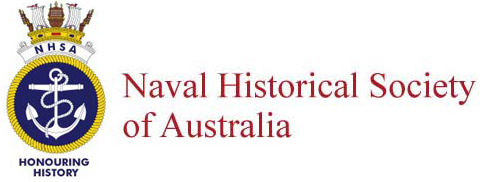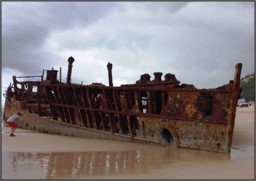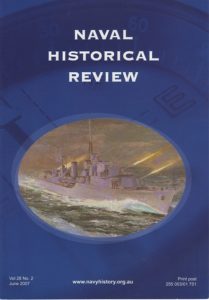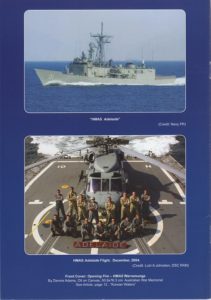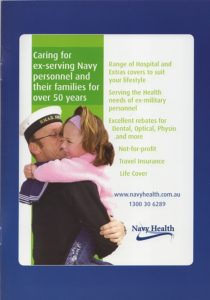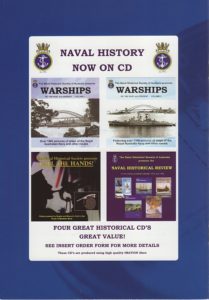The Queensland Fraser Coast and Royal Australian Navy Historical Ties
The Queensland Fraser Coast has a rich maritime history and a long and entwined history, first with the Queensland Maritime Defence Force and then with the Royal Australian Navy (RAN). The cities of Maryborough and Hervey Bay together form part of the area known as the Fraser Coast. Maryborough was settled by Europeans in 1847 and is one of Queensland’s oldest cities. It was first settled as a wool port and served as the Fraser Coast immigration port in the early days of Australian settlement. One of the first important companies to be established in Maryborough was Walkers Ltd. in 1864. It was a general engineering firm and shipbuilding commenced in 1877/78. It started building hopper barges, dredgers, ferries and tugs for the Queensland Government.
In 1884, Walkers began work on five hopper barges Bonito, Stingaree, Pumba, Bream and the Dolphin for the Queensland Government. During construction the decision was taken to convert them to also serve as auxiliary gunboats, to help the Queensland Maritime Defence Force protect the Fraser coast. Due to economics the shipyard closed down in 1905 but re-opened in 1918 for a few years before becoming inoperative in 1928 due to the Depression. The shipyard again opened in 1939 in response to wartime demand for vessels. There is a special Walkers Shipyards Memorial in Richmond Street, Mary River Parklands, Maryborough. Between 1940 and 1974, thirty-one ships were launched into the Mary River just upstream from the memorial. Thirty were built for the RAN and one ship for the Australian Army.
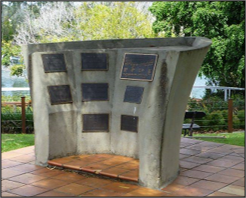

RAN ships built at Walkers Shipyard:
7 Minesweepers/corvettes: HMAS Maryborough, Toowoomba, Rockhampton, Cairns, Tamworth, Bowen, Gladstone; 3 Frigates: HMAS Burdekin, Diamantina, Shoalhaven; 1 Boom Defence Vessel: HMAS Kimbla; 2 Cargo Vessels: HMAS Banks, Bass; 10 Patrol Vessels: HMAS Aitape, Advance, Lae, Archer, Arrow, Barbette, Ladava, Bombard, Bandolier, Bayonet; 7 Landing Craft: HMAS Brunei, Labuan, Tarakan, Wewak, Salamaua, Buna, Betano; 1 Landing Craft for the Australian Army: Balikpapan.
Walker’s Maryborough shipyard closed in 1974. Walkers Ltd. subsequently became a subsidiary of Evans Deakin in 1981.
HMAS Maryborough (l)
One of the corvettes was called HMAS Maryborough (l) – named after the city in which she was built. HMAS Maryborough carried out a wide range of activities during WW2 – receiving battle honours in the Pacific (1942), the Indian Ocean (1942-44) and Sicily (1943). In December 1945 she returned to Australia and was decommissioned.
 
Two views of HMAS Maryborough on the occasion of her launching at Maryborough, 17 October 1940. |
The Queen’s Park guns at Maryborough overlooking Mary River
In 1914 the Commonwealth of Australia offered the above guns to Maryborough City Council for display. They are a marvel of 19th century gun technology and include an early version of a machine gun used to arm the ships of Queensland’s Maritime Defence Force. The single-barrel Nordenfelt 2.8 pound breech-loading gun was originally from the gunboat, HMQS Gayundah, while the two-barrel 1-inch Nordenfelt gun came from HMQS Midge, a wooden piquet boat.
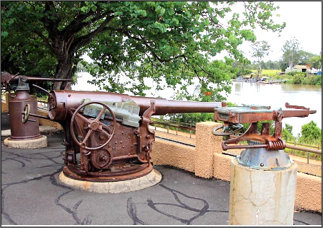
Queen’s Park Guns
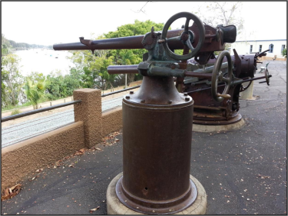 Nordenfelt 2.8 pounder breech-loading gun, serial number 4072. |
 Nordenfelt 2-barrel, 1-inch gun, serial number 6675. |
 Armstrong Mark IV 5-inch 2-ton 50-pounder breech loading gun, serial number 479. This is not the original 5-inch gun that was landed in Maryborough in July 1887. That gun, was identified as a Mark III variant, serial number 231. |
The next big event to connect the Fraser Coast to the RAN was the setting up of the Fraser Commando School on Fraser Island
FCS functioned as an important part of Australia’s Special Operations programme during World War II. Between October 1943 and August 1945, it trained over 900 personnel of the Services Reconnaissance Department (SRD). The base was located on the west side of Fraser Island about 1.6km south of where Kingfisher Bay Resort and Village are now sited.
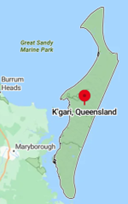
| Note: As this is an Historical article about Fraser Island I have used the term Fraser Island but, as you will see on the map, it is now called K’gari. On 7 June 2023, Fraser Island was officially renamed K’gari. K’gari (pronounced ‘Gurri’) is the Butchulla peoples’ traditional name for the island. Fraser Island was named after Captain James Fraser of the British ship Stirling Castle, which ran aground in May 1836 on Swain Reefs (near present-day Rockhampton) while travelling from Sydney to Singapore. The survivors headed south in a lifeboat, hoping to reach the convict settlement at Moreton Bay. Twelve survivors eventually reached the northern tip of Great Sandy Island (which would later be renamed after Captain Fraser). |
Training involved a Basic Course for all students, specialised training when required, and pre-operational training for some parties prior to their operation. By July 1944 the curriculum included a Basic Course “B”, of 12 weeks, including 1 weeks leave in Brisbane and 1 week’s practical exercise. Skills taught included unarmed combat and physical training; jungle craft, signals, Malay language, sailing and navigation, folboats (folding kayaks), demolitions, canoe surfing, map reading and compass use, weapons training, aircraft and ship recognition, swimming, rubber boats, horse transport (riding and pack saddles), reconnaissance procedure, identification of Japanese ranks, medical and security. A major exercise in the last week of the Basic Course involved a folboat raid on Maryborough, and attempting undetected dummy attacks on ships, railway sheds and the Maryborough aerodrome.
The original impetus for the school was to train operatives for Operation Falcon, an ambitious plan to carry out simultaneous attacks on 13 Japanese bases from Timor to New Ireland. The number of missions in Operation Falcon was gradually reduced due to a lack of submarine and helicopter transport. Although Falcon was not implemented, the SRD personnel trained on Fraser Island were used on other SRD operations in the Southwest Pacific Area.
The SRD had several special units such as the ‘M’ and ‘Z’ Special Units. ‘Z’ Special Unit, was generally thought of as ‘hit and run’ – they were inserted into their Area of Operations via small boat, submarine or airplane and conducted quick sabotage and intelligence gathering operations against the enemy before retreating. ‘M’ Special Unit on the other hand, was tasked with covert reconnaissance and intelligence gathering – carrying on the work refined by the Coastwatchers earlier in the war. This saw them operating behind enemy lines for extended periods to collect intelligence undetected and as such, they rarely tried to engage the enemy.
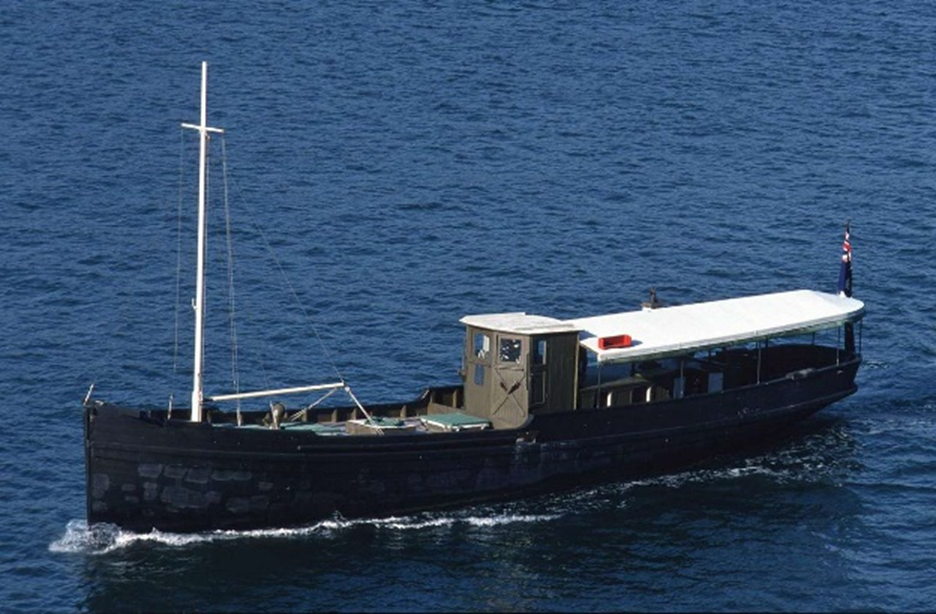
The MV Krait – now at the Australian National Maritime Museum at Pyrmont, Sydney.
The most well-known of the SRD’s operations was Operation Jaywick, which struck at Japanese shipping in Singapore harbour in late September 1943. A former Japanese fishing supply vessel, renamed the Krait, set out from Western Australia in early September and set up a canoe base at Panjang Island, from where 6 SRD operatives in three folboats set out and attached limpet mines to 6 Japanese freighters and 1 tanker, sinking between 37,000–39,000 tons of shipping. The men rendezvoused with the Krait in early October and returned safely to Western Australia. However, another attempted attack on Singapore Harbour a year later, codenamed Operation Rimau, failed with the loss of the whole SRD party of 23 men (10 being captured and executed by the Japanese).
The Krait is on permanent loan from the Australian War Memorial to the Australian National Maritime Museum
Monument to Operations Jaywick & Rimau
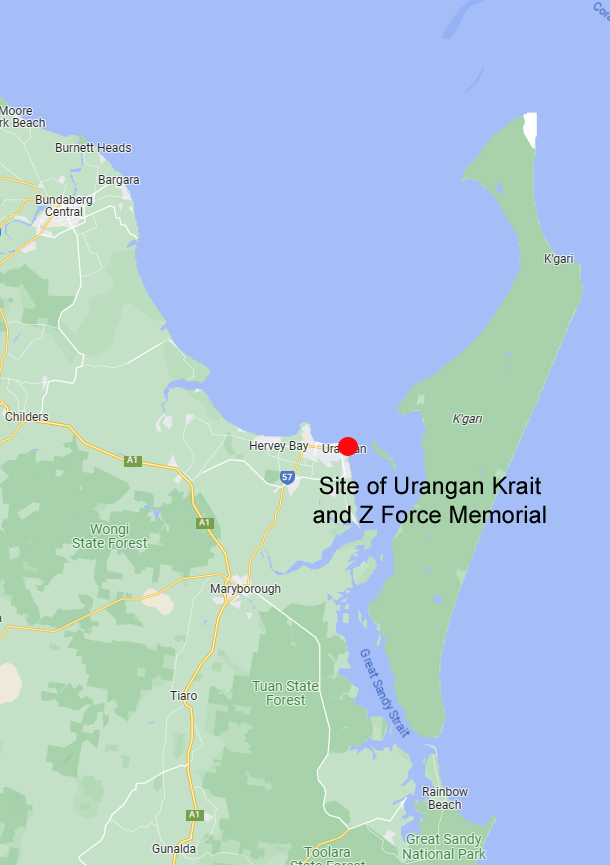 
Site of Urangan Krait and Z Force Memorial |
The monument commemorates the members of Z-Force who undertook operations Jaywick and Rimau in 1943 and 1944 during World War Two. This is a new memorial replacing a similar structure. It looks towards Fraser Island. During the war Fraser Island and Hervey Bay were used as training grounds for the famous Z-Force. The tropical training was on the Atherton Tablelands. The monument is placed at Dayman Street, Flinders Outlook, Dayman Park, Urangan, looking directly at Fraser Island.
SS Maheno
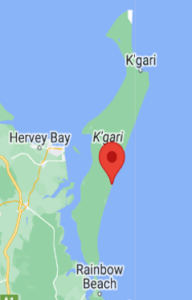 Red marks the site of SS Maheno on 75 Mile beach. |
The SS Maheno wreck is on 75 Mile beach, Fraser Island. This ship takes you back to WW1. It was built in Scotland in 1905 to carry first-class passengers on trips between Sydney, Melbourne, Hobart and Wellington. In 1915 it was converted for use as a hospital ship and sailed to Anzac Cove, to receive casualties after the battle for Hill 60. Maheno’s substantial medical staff included 5 doctors, 14 nurses and more than 60 soldiers of the Army Medical Corps. She collected the injured from the Gallipoli battlefields, gave immediate help to the injured and then took them to the more comprehensive medical facilities on Lemnos and Malta, and the extensive network of hospitals in Egypt. Refitted in 1916, Maheno was used to transport wounded soldiers from the battlefields of the Western Front to hospitals in England, before it was dedicated to carrying wounded home to New Zealand from Europe. In 1935, while Maheno was being taken to Japan for scrap, a towing line broke and the ship drifted onto Fraser Island, where it now lies on 75 Mile Beach.
|
|
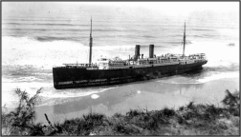 SS Maheno aground on Fraser Island |
HMAS Tobruk dive wreck as a tourist attraction
The scuttling of the ex-HMAS Tobruk was a project in partnership between the Queensland Government, Bundaberg and Fraser Coast Regional Councils to create an artificial reef and world-class dive site in the Hervey Bay region. Tobruk was launched on 1 March 1980 as the Royal Australian Navy’s first purpose built amphibious heavy lift ship. During her distinguished 34-year long career, Tobruk provided heavy-lift capabilities to transport equipment and personnel to and from Australian and foreign shores. With two helicopter decks, a tank deck, a vehicle deck and a roll on/roll off function, she was an important part of the RAN fleet. HMAS Tobruk could transport up to 18 tanks in the tank deck and could provide accommodation for up to 520 troops. Over 400 tonnes of material was removed from the ship before she was scuttled. Cleaning operations included the removal of fuels, oils, greases, hazardous material, and items that could break loose during the scuttling process. Diver access holes were cut to allow safe, easy access for divers, and allow light into the lower decks.

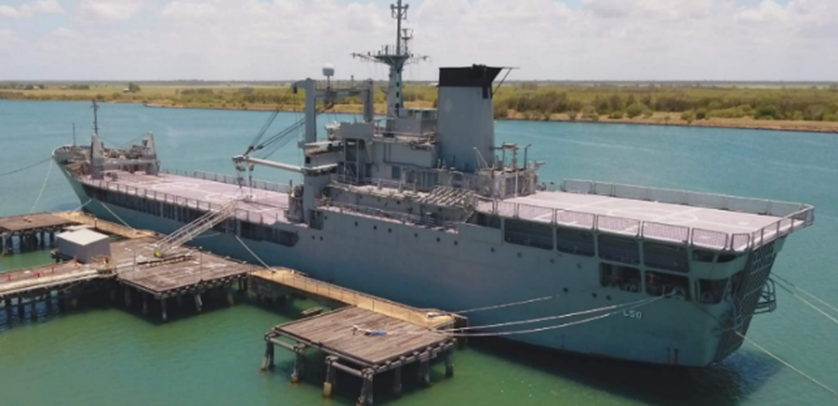
Sinking ex-HMAS Tobruk
The ship was scuttled on 29 June 2018 in 28.5 metres of water. The ship sank on its starboard side. Appraisals were conducted to consider righting the ship but extreme risks, lengthy time delays and high costs meant that leaving the ship as is was the best option. The dive design of the ship was reconfigured which included cutting additional holes in the port (upper) side of the ship, closing a few compartments due to safety concerns and securing large items. Due to the open design of the ship wreck, certified divers have access to explore 8 deck levels, including a 100m swim within the cavernous tank deck.

HMAS Maryborough given ‘The Freedom of Entry to Maryborough’ on the 3 September 2023.
HMAS Maryborough (II) was built by Austal Ships in Fremantle and commissioned 8 December 2007. She was one of 12 RAN Armidale Class Patrol Boats contributing to the nation’s fisheries protection, immigration, customs and drug law enforcement operations. In the event of war they would be tasked to control the waters close to the Australian mainland.
Freedom of Entry to the City of Maryborough
Fraser Coast residents cheered on the crew of the Royal Australian Navy’s HMAS Maryborough (II) when they paraded through the streets of Maryborough as part of a special ‘Freedom of Entry’ ceremony on Sunday, 3 September 2023. The Freedom of Entry to the City is a right granted to a military unit by a Local Government, authorising that unit to march through the streets of a city on a ceremonial occasion with ‘swords drawn, bayonets fixed, drums beating, bands playing and colours flying’. The granting of the Freedom of Entry to the City was a demonstration of the citizens’ trust and confidence in the armed group. In modern times, a Freedom of Entry parade is a symbolic honour often granted to mark a significant milestone. The Maryborough event was held ahead of the Royal Australian Navy’s decommissioning of the HMAS Maryborough (II) on 28 September 2023 after 15 years of service to the nation.


